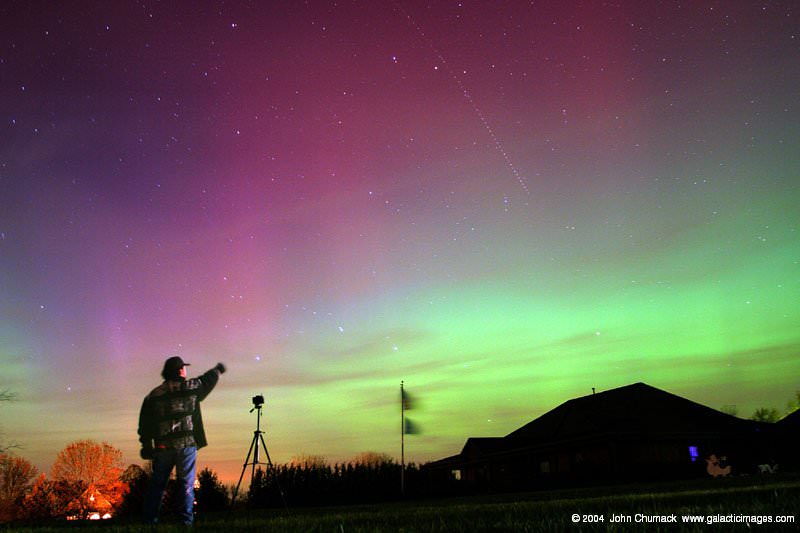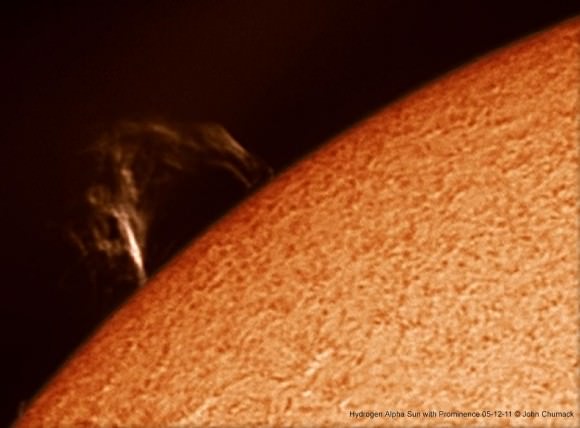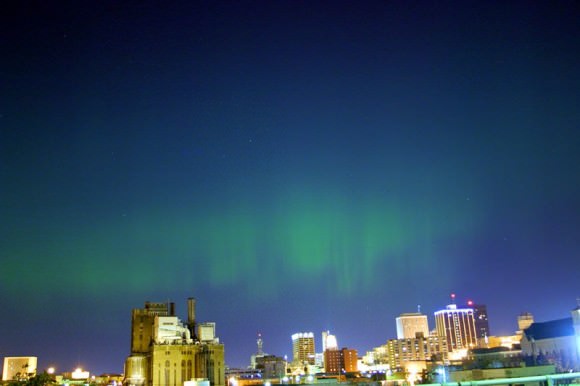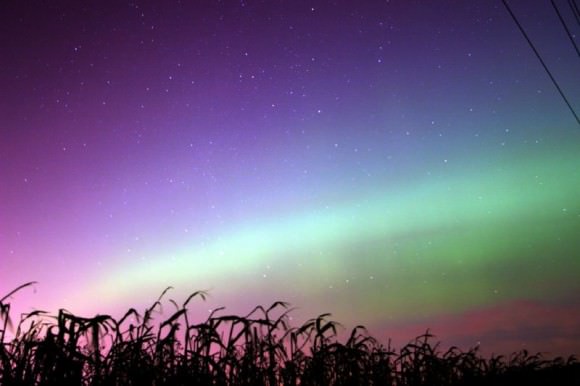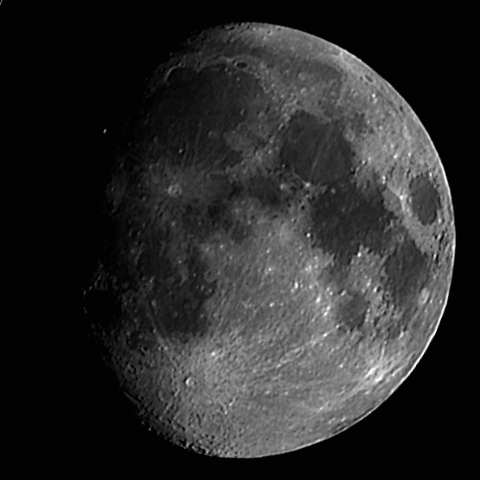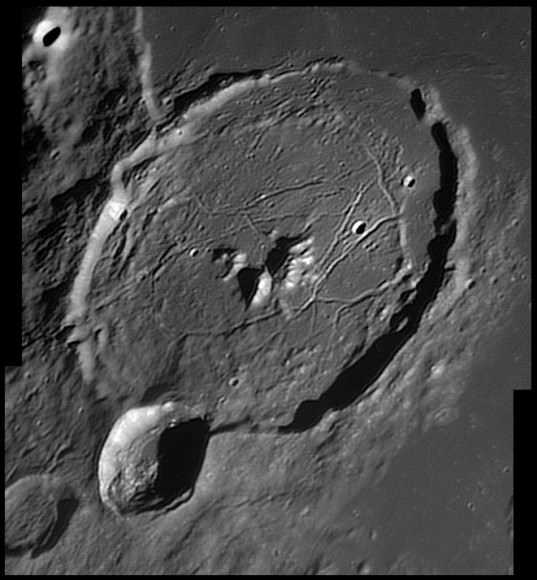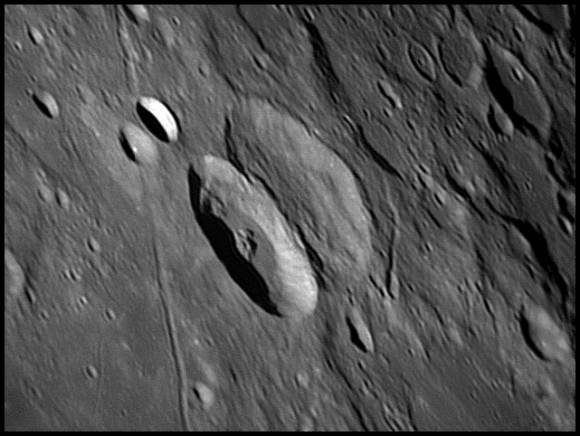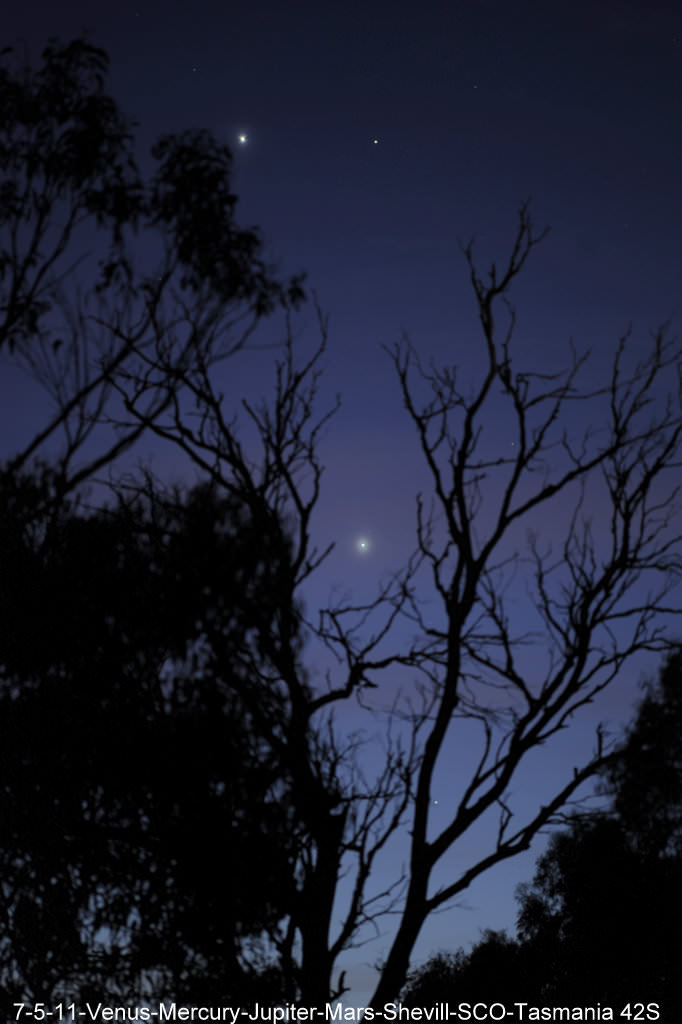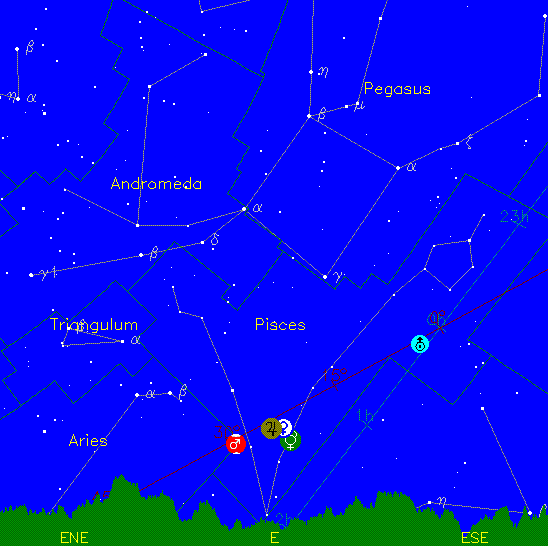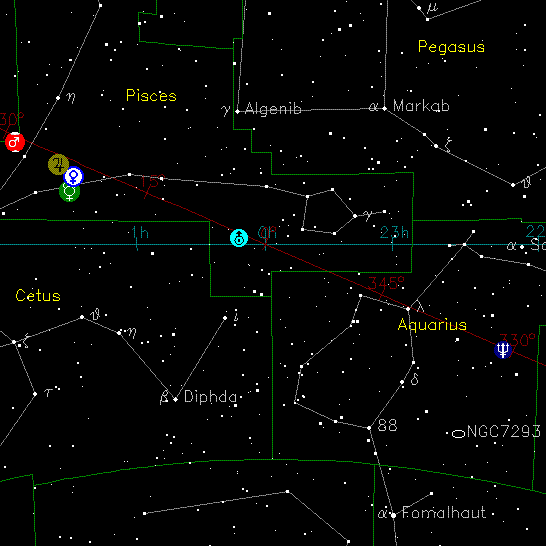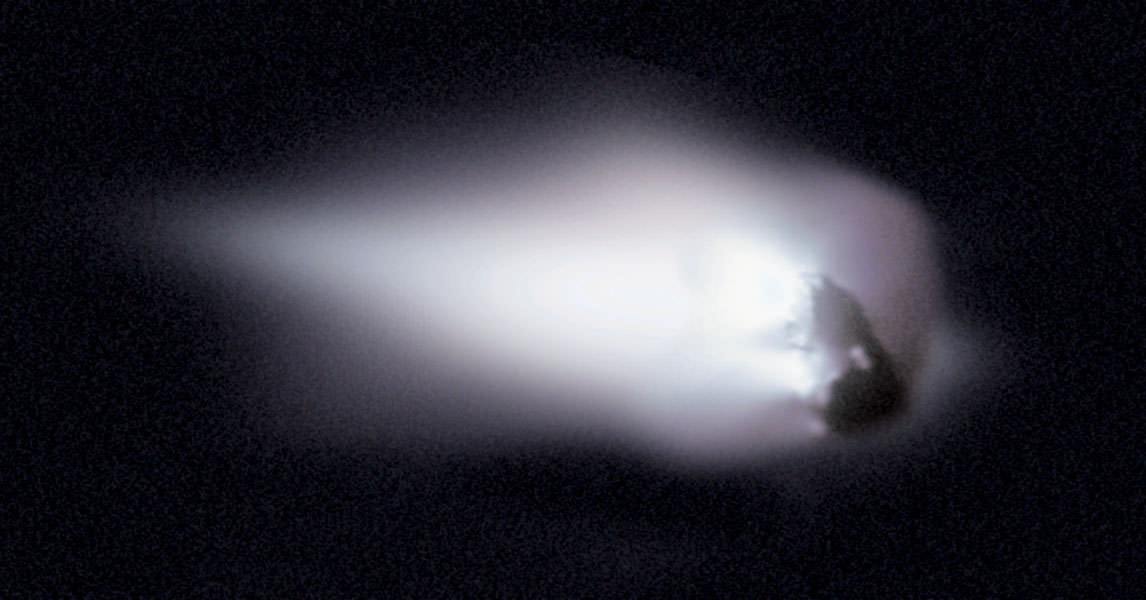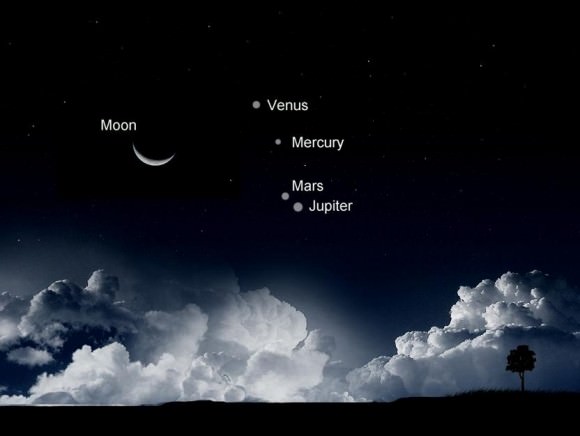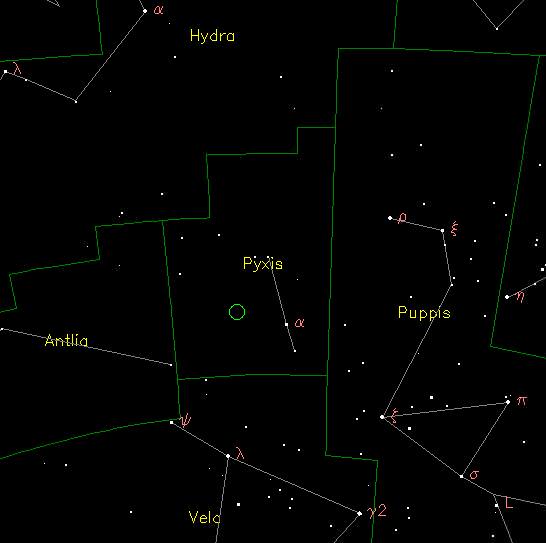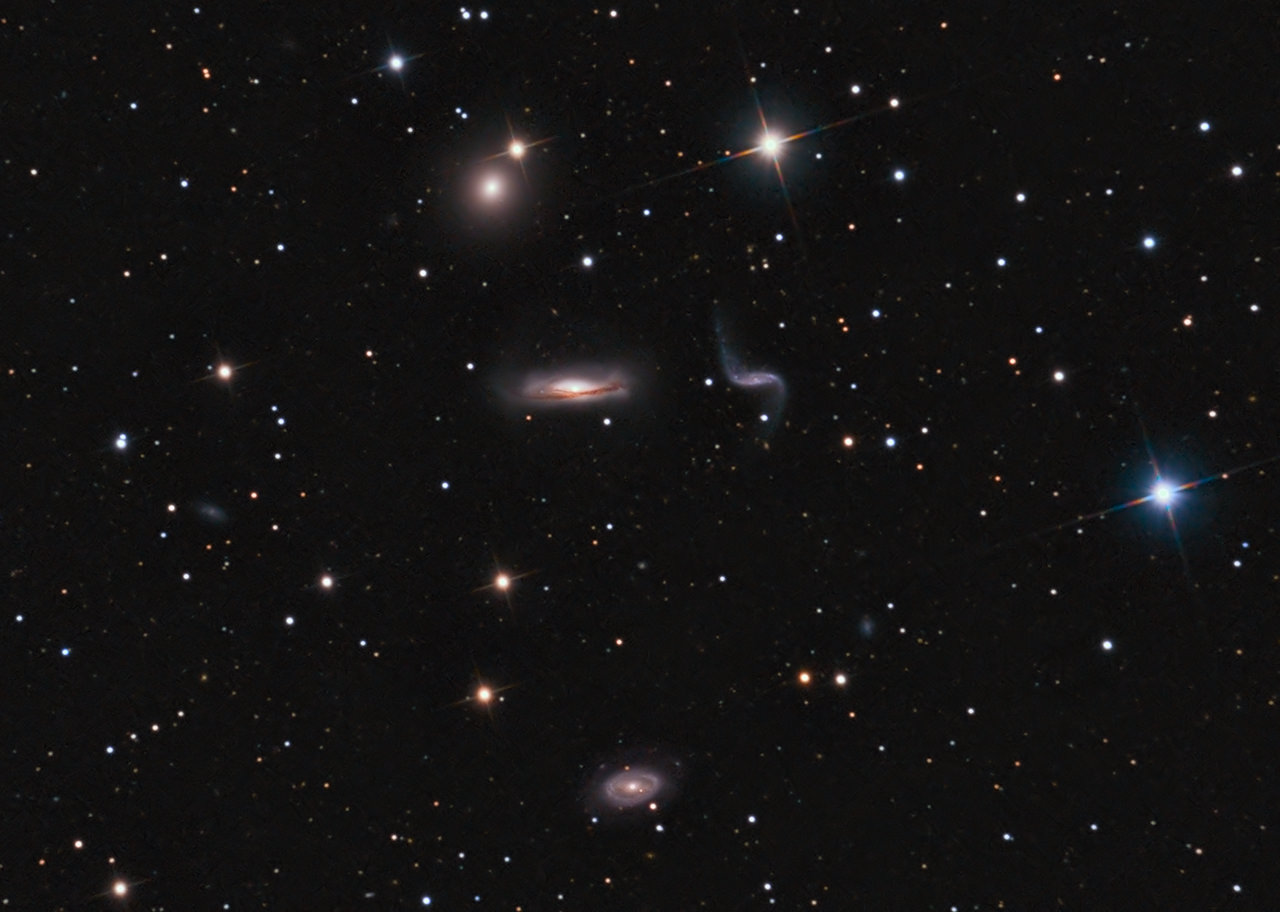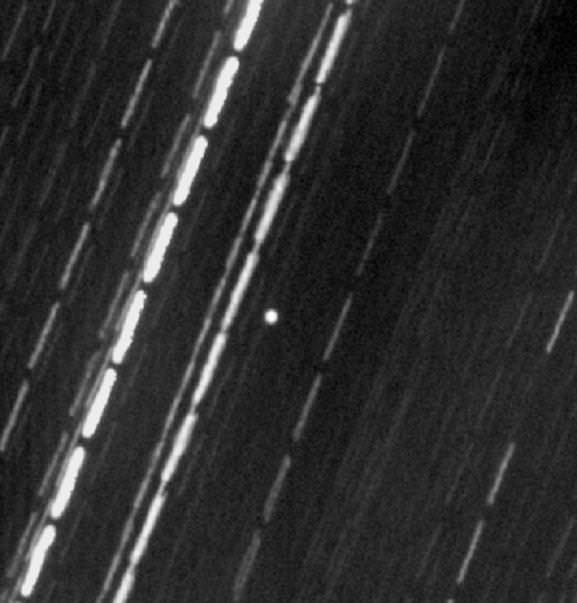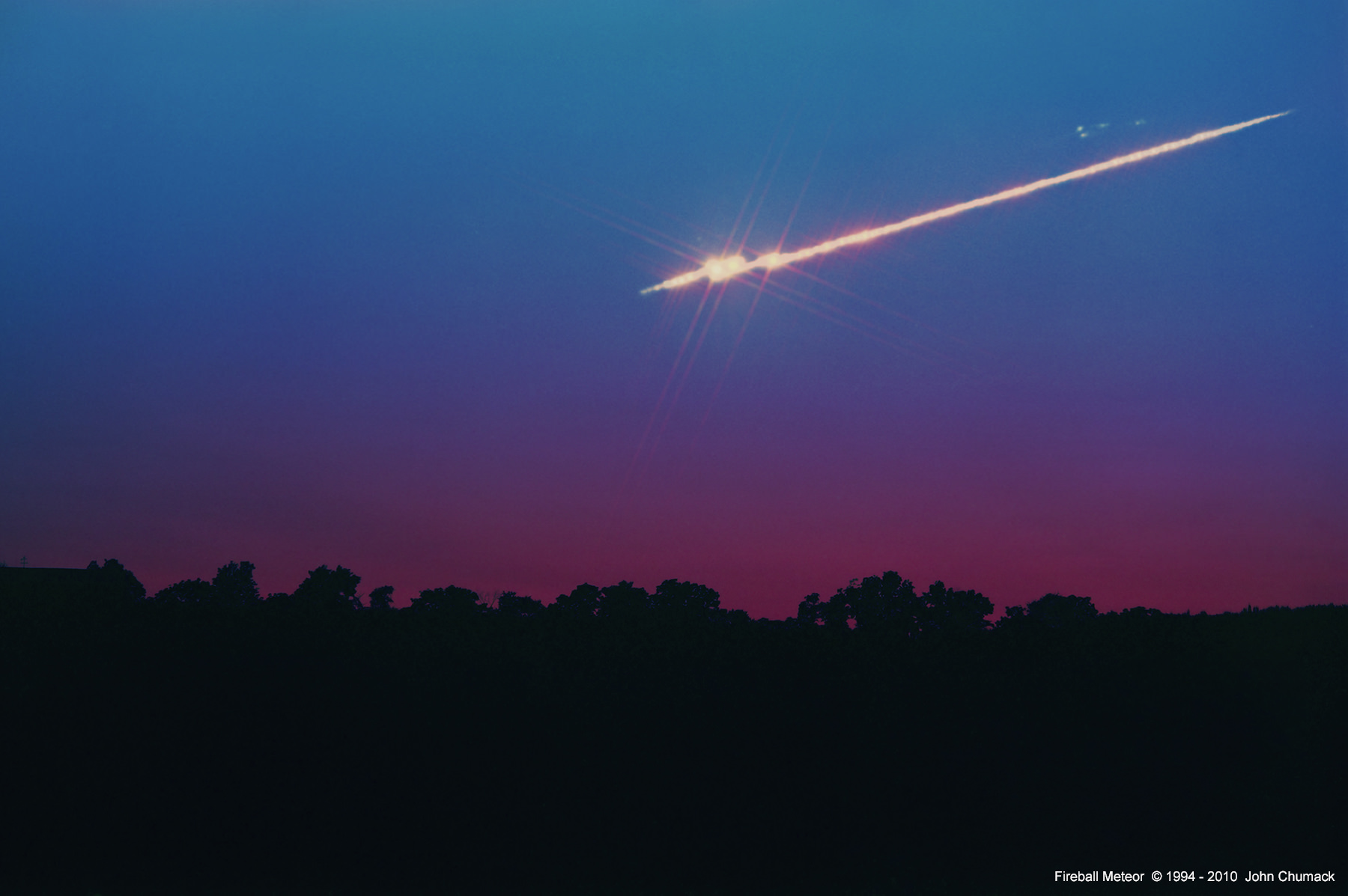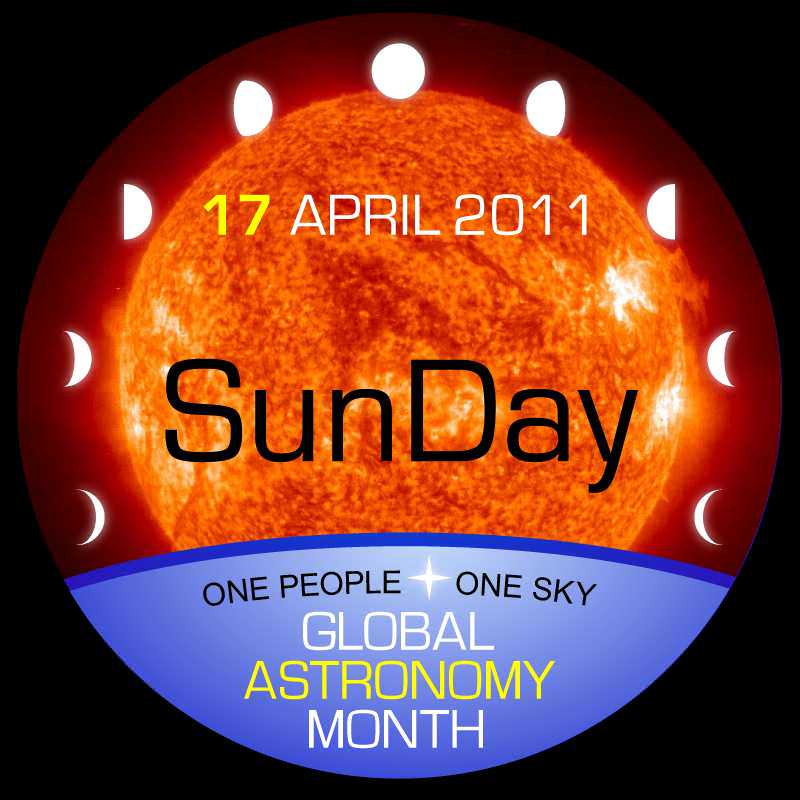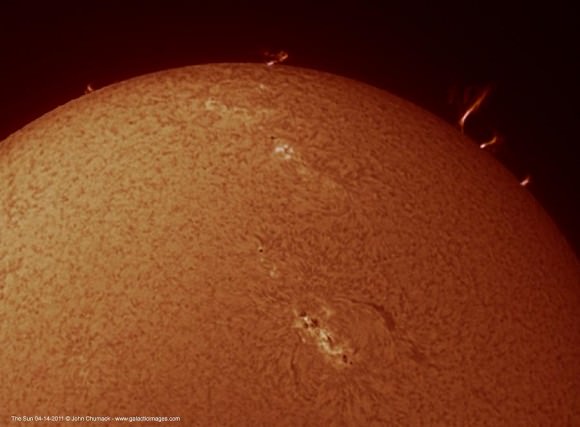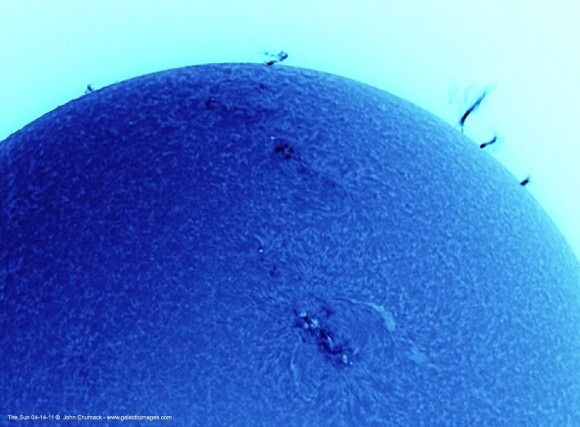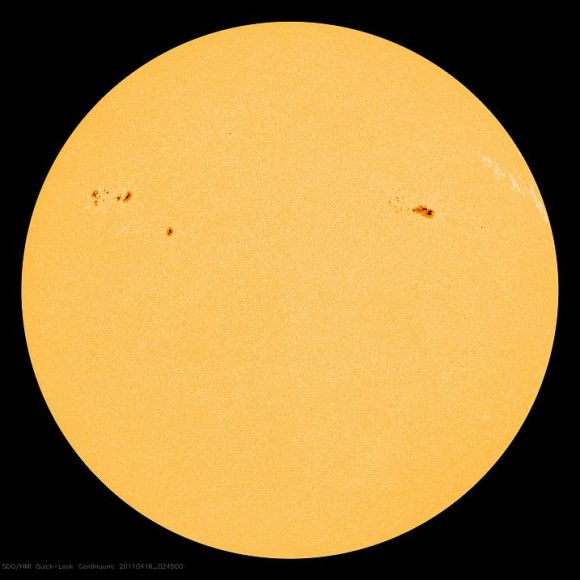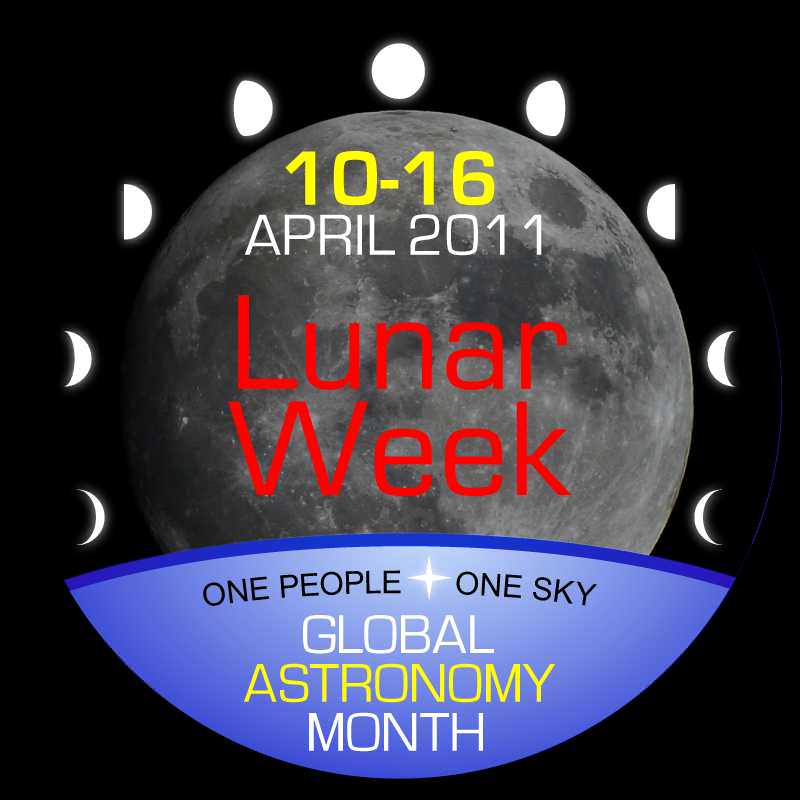Thanks to some very “hot” activity on the Sun, high latitude observers could be treated to some magnificent apparitions of the Aurora Borealis. But don’t count yourself out if you live a bit south of the pole… Sometimes the Northern Lights can surprise you!
According to Space Weather: “A magnetic filament exploded away from the sun on May 17th and propelled a cloud of plasma into space. The cloud (a CME) was not aimed directly at Earth, but it could deliver a glancing blow to our planet’s magnetic field during the late hours of May 19th.” And it wasn’t just then either… the Sun has been delivering some outstanding activity now for several days. Just check out this shot…
While the probability figures show as fairly low, don’t let that discourage you from looking. According to the latest information, the auroral oval is dipping low across the northern tier of the United States – leaving SkyWatchers from Canada through Kentucky an opportunity to spot a little skyglow. Why so optimistic? It’s the time of year…
Right now Earth’s magnetosphere and magnetopause (the point of contact) are positioned correctly to interact with the Sun’s influencing interplanetary magnetic field (IMF), and the plasma stream that flows past us as the solar wind. During the time around equinox – and even later – this leaves the door wide open for one of the most awesome signs of Spring… aurora! Visit the Geophysical Institute to sign up for aurora alerts, and use their tools to help locate the position of Earth’s auroral oval.
Spotting aurora isn’t hard, it simply just takes patience and reasonably dark skies. From experience you may see what looks like a distant search light – or it may appear as a red glow. At times the aurora can take on the appearance of a glowing green cloud that may or may not obscure the stars behind it. It shimmers and moves. How do you distinguish it from a cloud? Sometimes that can be difficult, but aurora will seem to “evaporate” rather than move with the wind. Having a few clouds won’t diminish the view and even moderate light pollution won’t stop it if the activity is strong enough. The most important factor is to give your eyes plenty of time to adjust to low light conditions and allow plenty of time for activity to happen.
Good luck… and may the Aurora be with you!
Many thanks to John Chumack of Galactic Images for sharing his recent solar photo and Aurora shots with us!

